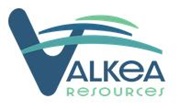District Metals: Reports on Initial Geological Work at the Tomtebo Property
VANCOUVER, BC , Sept. 30, 2020 /CNW/ – District Metals Corp. (TSXV: DMX) (FRA: DFPP); (“District” or the “Company”) is pleased to report on the results of its recently completed initial fieldwork at its polymetallic Tomtebo Project in the Bergslagen Mining District of south-central Sweden. This initial work consisted of geological mapping, prospecting and geochemical sampling at the former Tomtebo Mine, and regionally across the 17 km mineralized trend within the 5,144 hectare Property (Figure 1). This fieldwork will be further complemented by a recently commenced review of available historic drill core from the Tomtebo Mine. The fieldwork program and review of historic drill core will enhance the historical data compilation and recently flown SkyTEM survey, all in preparation for a drilling campaign at Tomtebo planned for early-2021.
Initial Fieldwork Highlights
- All outcrops in the former Tomtebo Mine area and most outcrops around the mine area were mapped and sampled, and strongly altered and mineralized rocks were identified to the south and southwest of the historic Tomtebo Mine for at least 600 m. Surface mapping west, north and east of the mine was not possible due to a veneer of overburden, but the recently flown SkyTEM survey is expected to provide valuable information about this area with no outcrop.
- All rocks within the two accessible Tomtebo open pits are strongly altered throughout with occurrences of sulphide mineralization. Varying proportions of silicification (quartz-flooding), phlogopite/biotite, and anthophyllite were observed, which are all important alteration minerals associated with polymetallic mineralization in the Bergslagen District. Also, a tremolite skarn after former limestone was identified, often one of the controls on mineralization in the District.
- Sulphide mineralization observed at the Tomtebo open pits comprises disseminated and stockwork vein-style pyrite and chalcopyrite with minor pyrrhotite, arsenopyrite and sphalerite. The dominance of pyrite-chalcopyrite in a strongly quartz-phlogopite altered host rock, suggests hot hydrothermal fluids from the core of a hydrothermal system, which confirms the open pit mine areas as proximal feeder zones.
- Geological work at the Nyberget area which encompasses the historic Lövås Mine mapped out two large marble units with associated replacement style banded semi-massive to massive sulphide mineralization. Quartz vein with abundant chalcopyrite from a historic showing was also identified, which is interpreted as distal to massive sulphide mineralization or epigenetic mineralization.
- Regional geological work at the Kvistaberget area identified several mineral occurrences consisting of small pits and underground workings where quartz-chalcopyrite veins were mined.
Garrett Ainsworth, CEO of District, commented: “Our preliminary geological work at the former Tomtebo Mine and regionally across the Tomtebo Property has provided us with valuable information that is being integrated with existing historical data and our recently flown SkyTEM survey to generate an even more robust understanding of the geologic package on the Property. Surface mapping of the open pits at the Tomtebo Mine has provided geological data that correlates well with the historic drill data, and provides additional confidence in the orientation of structures and mineralization at the Tomtebo Mine. Also, geological work on several regional areas within the Property identified and confirmed important indicators that have enhanced the possibility of discovering additional polymetallic mineralization.”
CLICK HERE to read the full news release from District Metals (DMX.V).




























